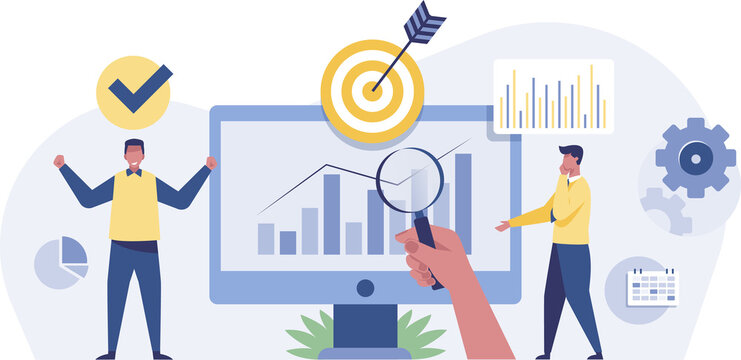In today’s dynamic business landscape, understanding your customers goes beyond merely providing a product or service—they crave a personalized experience. This is where the concept of “customer insights” takes center stage, acting as the compass that guides businesses toward success.
Understanding Customer Behavior
1. Analyzing Customer Preferences
To truly connect with your audience, you need to delve into their preferences. This involves studying their likes, dislikes, and the factors influencing their choices.
2. Identifying Buying Patterns
Customer insights allow businesses to identify patterns in purchasing behavior. Recognizing trends helps in tailoring marketing strategies and product offerings accordingly.
3. Importance of Understanding Customer Behavior
Understanding customer behavior is not just about predicting purchases; it’s about building relationships. By anticipating needs, businesses can enhance the overall customer experience.
Methods to Gather Customer Insights
1. Surveys and Feedback Forms
Directly asking customers for feedback through surveys provides valuable insights. It’s a straightforward method to understand their satisfaction levels and areas for improvement.
2. Social Media Monitoring
In the age of digital interaction, social media platforms are gold mines of customer insights. Monitoring discussions and comments can reveal sentiments and preferences.
3. Customer Interviews
Engaging with customers through interviews allows for a more personal understanding. It provides qualitative data that goes beyond numerical metrics.
4. Data Analytics
Leveraging data analytics tools helps in processing vast amounts of information efficiently. This includes analyzing online behavior, purchase history, and demographic data.
Utilizing Technology for Customer Insights
1. AI and Machine Learning Applications
Artificial intelligence and machine learning can analyze complex datasets, predicting future behaviors based on historical data. This enables businesses to make proactive decisions.
2. Customer Relationship Management (CRM) Tools
CRM tools centralize customer data, facilitating a holistic view. This aids in tailoring interactions and ensuring a consistent experience across touchpoints.
3. Big Data Analytics
The sheer volume of data available can be overwhelming. Big data analytics sift through this information, extracting meaningful insights that inform business strategies.
Benefits of Customer Insights
1. Improved Customer Satisfaction
Meeting customer expectations leads to increased satisfaction. Insights help in understanding those expectations and crafting products and services accordingly.
2. Enhanced Product Development
By knowing what customers want, businesses can innovate and develop products that align with market demands. This proactive approach fosters long-term success.
3. Increased Customer Loyalty
Customer loyalty is a result of consistently meeting or exceeding expectations. Insights enable businesses to build loyalty by addressing pain points and enhancing positive experiences.
4. Competitive Advantage
In a competitive market, having a deep understanding of customers provides a distinct advantage. Tailored strategies based on insights often outperform generic approaches.
Challenges
1. Data Privacy Concerns
As businesses collect more data, concerns about privacy and security arise. Striking a balance between insights and respecting customer privacy is crucial.
2. Obtaining Genuine Feedback
Customers may not always provide honest feedback. Creating an environment that encourages openness is essential for obtaining authentic insights.
3. Analyzing Vast Amounts of Data
The abundance of data can be overwhelming. Effective analysis requires sophisticated tools and skilled professionals to extract meaningful information.
The Role of Customer Insights in Marketing
1. Targeted Marketing Campaigns
Armed with insights, marketing campaigns can be tailored to specific customer segments. This results in higher engagement and conversion rates.
2. Personalized Communication
Customer insights enable businesses to communicate with individuals on a personal level. Personalization fosters a stronger connection between the brand and the customer.
3. Creating Customer-centric Content
Content that resonates with customers is more likely to be shared and appreciated. Understanding their preferences guides content creation, ensuring relevance and impact.
Future Trends
1. Advancements in Technology
Continued advancements in technology will further refine data collection and analysis methods. Businesses must stay abreast of these developments to remain competitive.
2. Predictive Analytics
The future lies in predictive analytics, where businesses can anticipate customer needs and preferences before they even express them.
3. Customization at Scale
As technology evolves, customization will become more scalable. Businesses can tailor offerings to individual customers without compromising efficiency.
Tips for Businesses to Leverage Customer Insights
1. Integrating Customer Feedback into Decision-Making
Customer insights should not exist in isolation. Successful businesses integrate these insights into decision-making processes at all levels.
2. Continuous Monitoring and Adaptation
Customer preferences change over time. Continuous monitoring and adaptation ensure that businesses stay aligned with evolving customer needs.
Measuring the ROI of Customer Insights
1. Key Performance Indicators (KPIs)
Establishing KPIs for customer insights initiatives helps in measuring success. Metrics such as customer satisfaction scores and retention rates provide tangible indicators.
2. Evaluating the Success of Customer Insights Strategies
Regularly evaluating the effectiveness of strategies ensures that businesses remain agile. What works today may need adjustment tomorrow, and consumer insights help in making informed decisions.
Common Misconceptions
1. Addressing Myths and Clarifying Misconceptions
Some common misconceptions may hinder the adoption of customer insights strategies. Dispelling myths fosters a more informed and receptive approach among businesses.
The Role of Employee Feedback in Enhancing Consumer Insights
1. Importance of Internal Feedback
Employees are often the frontline representatives of a business. Collecting their feedback provides valuable insights into customer interactions and overall satisfaction.
2. Collaboration Between Departments for Holistic Insights
Breaking down silos between departments ensures a holistic understanding of customer interactions. Collaborative efforts yield more comprehensive insights.
Conclusion
In the era of customer-centricity, businesses that prioritize customer insights gain a competitive edge. Understanding customer behavior, utilizing advanced technologies, and translating insights into strategic actions are crucial for sustained success. By investing in customer insights, businesses not only meet current expectations but also position themselves for future growth.
Ready to elevate your business with cutting-edge customer insights? Request a demo from AIM Technologies today and discover how our advanced solutions can revolutionize your approach to understanding and engaging with your customers. Don’t miss out on the opportunity to stay ahead in the ever-evolving business landscape.
FAQs
How often should businesses collect customer feedback?
- Regular feedback collection is essential, but the frequency depends on the industry and business model. Quarterly or semi-annual surveys are common.
Are there industries where customer insights are more critical?
- Consumer insights are valuable across all industries, but they are particularly crucial in retail, e-commerce, and service-oriented businesses.
Can small businesses benefit from consumer insights?
- Absolutely. Consumer insights provide valuable information for businesses of all sizes, helping them understand and meet customer expectations.
How can businesses address data privacy concerns when collecting consumer insights?
- Implementing robust security measures, being transparent about data usage, and obtaining explicit consent are key steps in addressing data privacy concerns.
Is it possible to over-rely on technology for gathering consumer insights?
- While technology is valuable, businesses should maintain a balance. Human insights and qualitative data are equally important for a holistic understanding.





